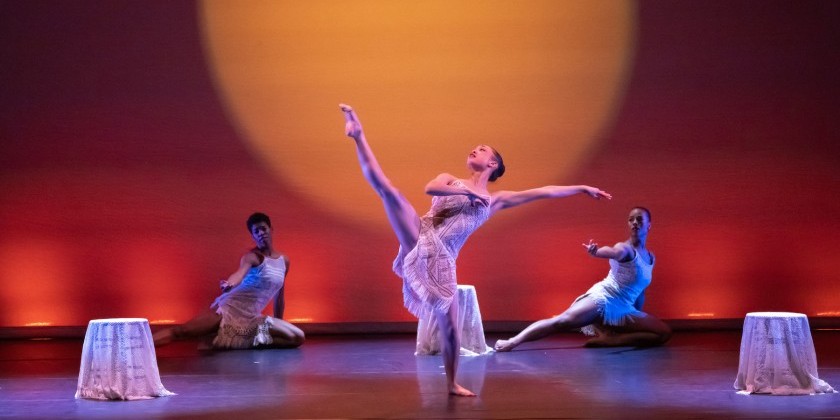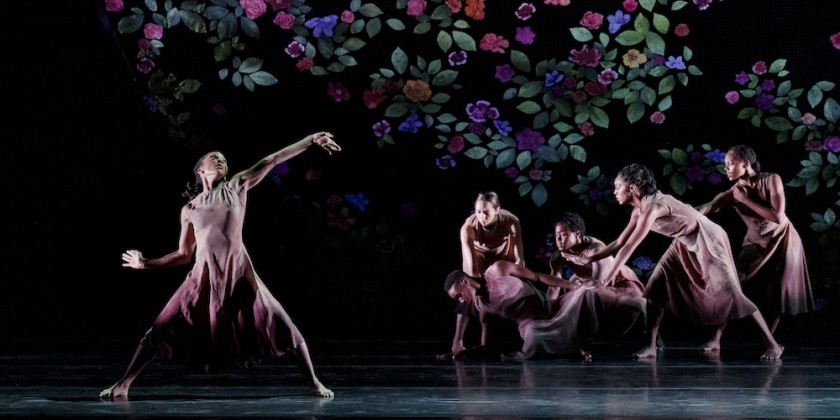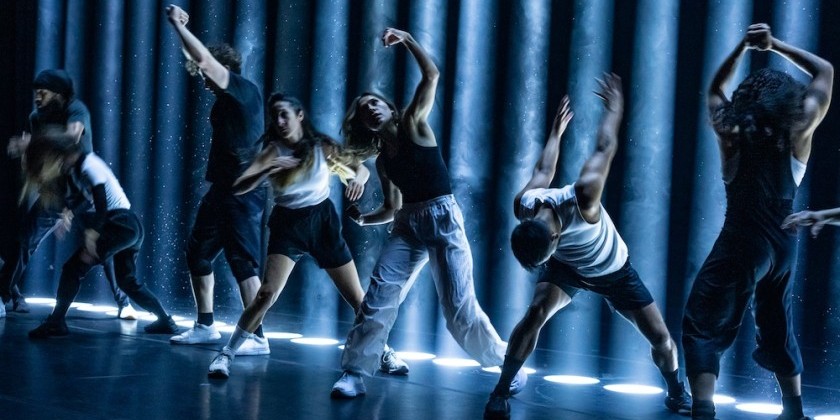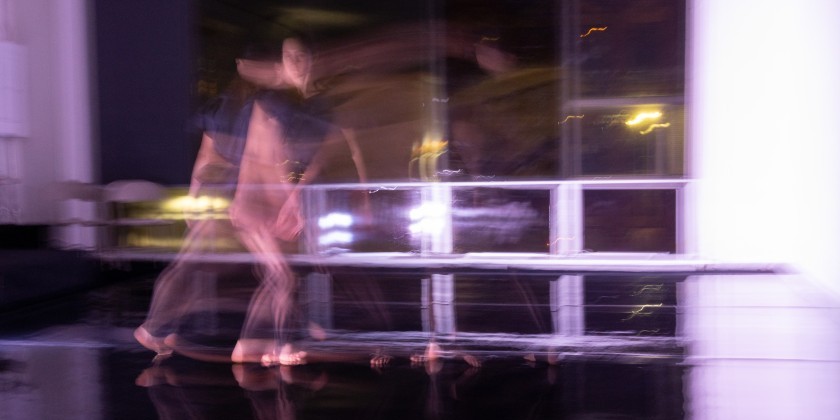THE DANCE ENTHUSIAST'S A TO Z: E for Kyla ERNST-ALPER and Lakey EVANS-PEÑA
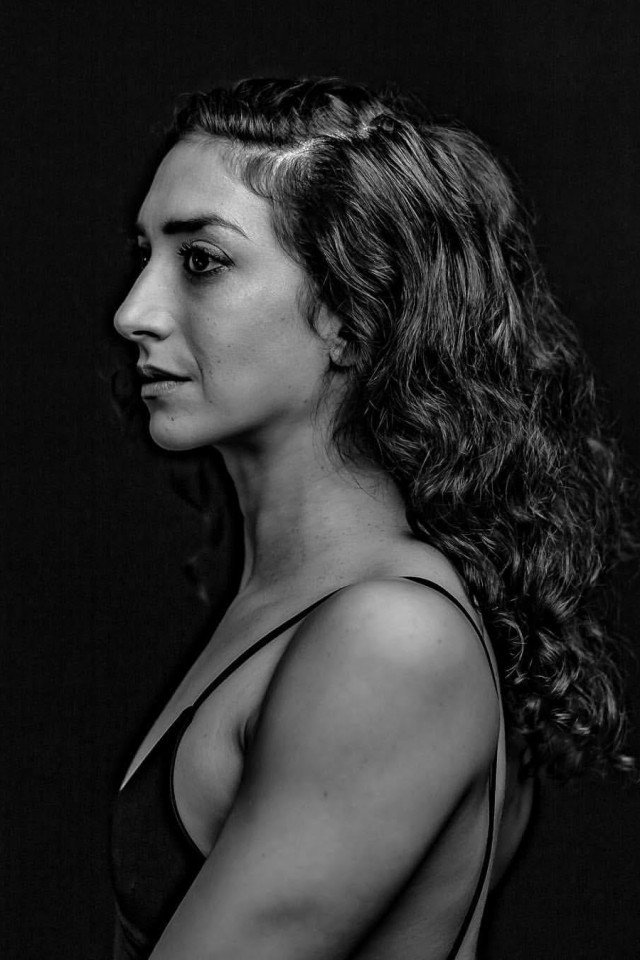
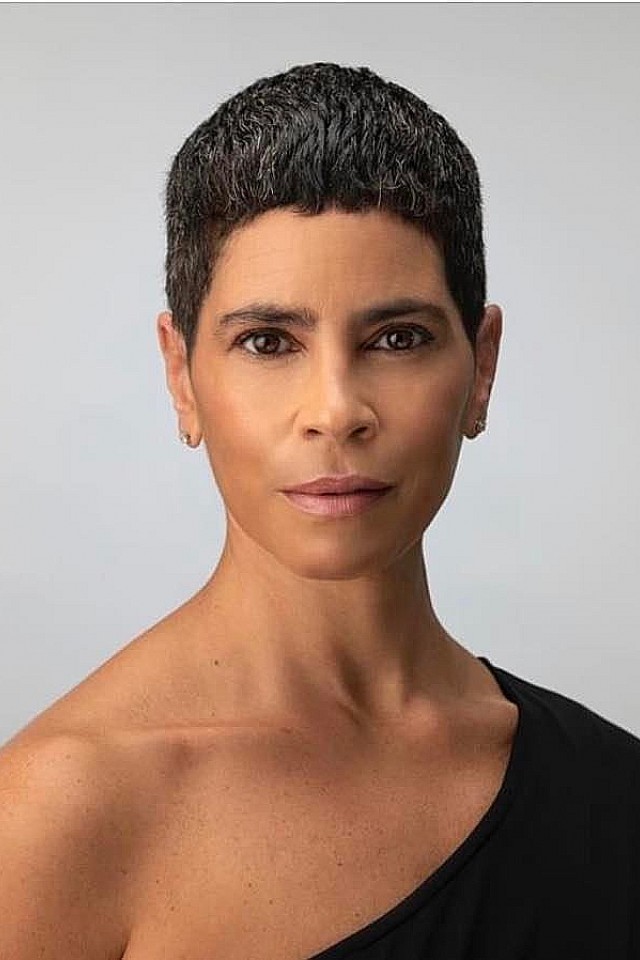
Kyla Ernst-Alper
Biography
A recovering ballerina, Kyla Ernst-Alper is reclaiming her autonomy with each new self-authored exploration and creation. Her work spans cabaret, contemporary dance, contemporary circus, immersive theater and more, and her interests lie in identity and sexual politics. You may recognize her from The Underground Cabaret (co-producer and performer) at The Slipper Room, an aerial intructor at Vital Brooklyn and Aerial Arts NYC, and from her work with various companies (Ballet Tech, Elisa Monte Dance, Battery Dance Company, White Wave, Dzul Dance, etc) and events (New York Burlesque Festival, Dirty Show Detroit, Torture Garden UK & NYC, Estée Lauder’s Supreme 2021 campaign, and more). Follow her on Instagram at @kygwen.
Image captions & credits: Kyla Ernst-Alper suspended; photo by Justin Nöhre | Profile shot by Mark Grochowski
Lakey Evans-Peña
Biography
A scholarship recipient at the Ailey School before being selected by Sylvia Waters to dance with Ailey II, Lakey Evans-Peña is presently the Rehearsal Director for Ailey II, Rehearsal Director for the Ailey/Fordham Student Dancers, advisor to the BFA juniors, and as a master teacher of the Horton technique for the Professional Division of The Ailey School. Her teaching, rehearsing and coaching practice is centered on cultural relevance, artistic empowerment, and performance practice. In addition to touring with Donald Byrd’s The Harlem Nutcracker for three years, she founded the Williamsburg Movement & Arts Center in 2009. Follow her on Instagram at @lakeyevanspena.
Image captions & credits: Lakey Evans-Peña dancing; photo by Eduardo Patino | Headshot by Nir Arieli
What made you decide to enter this profession?
Ernst-Alper:
When I was 2 years old, I saw a performance of Les Sylphides, moments of which I still remember, and knew that I was going to be a movement artist.
Evans-Peña:
Something about being on stage and engaging with people spoke deeply to me, even at a young age.
Who has been the biggest influence on your life and why?
Ernst-Alper:
I can’t pick just one. My parents weren’t working artists, but they surrounded my sister and me with art, and encouraged us to pursue anything we wanted to explore. I call them type A hippies — along with judgement-free support, there was an expectation that whatever we did, we would do our best.
Evans-Peña:
I have been blessed with many people in my life who have guided me on my way personally and professionally. My grandparents to start with, who were instrumental in teaching me how to navigate the world. And my husband of 24 years, who continues to inspire me as a person.
I can always rely on __________ to cheer up.
Ernst-Alper:
Watching my peers perform brings me so much joy! Any good show makes me happy, but there is something remarkably special about knowing the person on stage, and seeing them shine in their element.
Evans-Peña:
Being in the studio.
I practice self-care by __________.
Ernst-Alper:
I love a really intense massage or acupuncture session.
Evans-Peña:
I love the Insight Timer app! It offers wonderful meditations, inspirational talks and a global community.
Pets or plants. Either way, why and what kind?
Ernst-Alper:
Plants! Especially living in the city, I need plants.
Evans-Peña:
Both! [I'm a] Shorkie Poo champion and Golden Pothos for plant.
Cooking or eating out? Either way, what is your favorite meal?
Ernst-Alper:
I don’t really cook, but many wonderful people around me do (and I love helping). I much prefer a meal at a home with friends and family rather than a meal out. I’m almost always out because of my work or seeing shows, so having uninterrupted time with people I love is so precious.
Evans-Peña:
Again both. I love to eat, so either works! Favorite meal (today) would be sushi (but this is sure to change tomorrow).
If you could relive the past or catch a glimpse of the future, which would you pick and why?
Ernst-Alper:
Nope. I am who I am because of the past, and knowing the future would hinder my ability to live in the present.
Evans-Peña:
The future: to see what how the human race has evolved.
What is your personal approach to handling challenging people or situations?
Ernst-Alper:
I’ve learned it is best to pay attention to who people are, and not expect them to change. I’ve been a professional performer for 25 years, so at this point I have a low threshold for bullshit and bad behavior. If a challenging person is unavoidable, I chose my battles selectively and keep interactions to a minimum.
Evans-Peña:
Taking a deep breath and zooming out for perspective.
How has your personal life changed since the pandemic?
Ernst-Alper:
So much has changed since lockdown, which is not only because of the pandemic — my life has changed in big ways many times over since childhood.
That said, during the pandemic, I grew stronger relationships with some incredible people, including Elizabeth Munn, my fellow aerialist and co-producer of The Underground Cabaret, which we started in April 2021 (we’re now a regular show at The Slipper Room, NYC. Her impact on my personal and professional life has been so positive.
In early May 2020, an old acquaintance introduced me to photographer and watchmaker Giles Clement, who then took my portrait as part of his series featuring artists during Covid. We quickly became friends, and Giles is now a housemate, my chosen family, and a creative collaborator.
Evans-Peña:
During the pandemic I was able to more frequently connect with many of my close friends/chosen family, because we were all not touring or immersed in work in the same way. It was wonderful and we have worked to keep that up as much as possible.
How has your art or approach towards art changed since the pandemic?
Ernst-Alper:
It is hard to separate the end of the pandemic from the death of my mom Kathy.
The moment live performances were legal again in NYC, she was diagnosed with terminal cancer a few weeks later. I have much more to say about my artistic evolution after a year of lockdown followed by 14 months of the slow-motion death of my mom while returning to the stage. My work has always been self-examining and personal, but I gained a fresh and laser-focused vision, and became so prolific the moment lockdown began. I’m grateful for the audiences, performers, and producers who are a part of my cathartic processing in the studio and on stage.
Evans-Peña:
I feel that the ability to teach, perform, and share with a worldwide audience virtually is a wonderful addition to the art form. While I still choose to be in-person whenever possible, the availability to engage deeply from afar has expanded my approach and art.
What is the last show you saw and loved?
Ernst-Alper:
Dimanche was everything I needed and wanted. It was perfect — surreal, poignant, funny, cinematic. A divinely wonky kind of gorgeous.
Evans-Peña:
Shamel Pitts' Black Hole: Trilogy and Triathlon. Stunning doesn’t even to begin to articulate the experience.
What is your pre-performance (as a spectator or a performer) ritual?
Ernst-Alper:
I set my hair in pin curls earlier in the day (if it’s a show where my hair will be out).
Then I’ll train for a couple of hours. If I’m doing something new or something I haven’t performed in a while, I might run through the act.
Then an hour for makeup, even though I’m almost always done in 45. I can’t rush a cat eye or fake lashes, so I like to give myself wiggle room.
During my commute to the venue I’ll think about what I’m going to perform, and sometimes I’ll listen to the music. Once I’m on site I like to be present and to chat with the crew and fellow performers — get a vibe for the night and connect with people. Right before I perform, I’ll warm up again, and I might think through what I’m going to do one last time.
Evans-Peña:
As a performer, breathing, intention-setting, a reminder that this is a shared experience with the audience.
As a spectator, being open to the present moment.
I wish I could be a fly on the wall for this moment in dance history: __________.
Ernst-Alper:
I’ve been digging into the history of ballerinas as sex workers, and it would be fascinating to be in those studios that Degas captured in his famous paintings. While there is a perception that so much has changed since that time, I feel that in actuality not much has changed.
Evans-Peña:
Alvin Ailey in rehearsal creating Revelations.
I have / have had the most fun performing __________’s choreography or trying out this genre of dance _____________.
Ernst-Alper:
Angela Harriell of The Love Show makes work that is a joy to perform, and she and her dancers are exceptionally talented and kind humans.
And not much beats howling like a dog and channeling the jittery movement style of a silent film while performing Eliot Feld’s Paper Tiger.
Evans-Peña:
I have had the most fun taking a myriad of virtual classes during the lockdown portion of the pandemic. There were many great choices, genres and methodologies that I had wanted to explore, but didn’t ever seem to have the time to.
Is there a book, podcast or TV program you recommend to others and why?
Ernst-Alper:
Podcast: The Turning: Room of Mirrors. Many trigger warnings. These stories of misogyny and abuse in the dance world are not unique (my experience was similar), and are so institutionalized that even I have become casual and matter of fact about events that should horrify. Listening to the podcast was like having someone grab me by the shoulders, shake me, and say “what happened to you was not ok, and it’s normal that you are still not ok.”
Book: Neo-Burlesque: Striptease as Transformation. Here's a favorite line: “Bodies on a burlesque stage are invited to occupy a space of sexual agency, and when those bodies are self-possessed and challenge mainstream ideas of beauty, a number of social taboos are broken.” — Lynn Sally
Most of my work now happens in the world of illegitimate theatre, which umbrellas burlesque, variety, cabaret, and circus. This book digs into the layers of what makes burlesque so exciting and important.
Evans-Peña:
I recently finished Atomic Habits by James Clear and absolutely recommend it. There are so many tiny but powerful shares throughout the book.
This city or country is the best place I have ever been to for art: __________.
Ernst-Alper:
London is so fabulous. And of course New York — that’s why I live here. Also, the art museum in Cleveland is dope!
Evans-Peña:
New York City.
Which social media app are you most drawn to?
Ernst-Alper:
Willingly trapped by Instagram while not so patiently waiting for a Bluesky invite code.
Evans-Peña:
Instagram.
What advice do you have for young people in your field?
Ernst-Alper:
Stay humble, but get paid. Learn as much as you can, especially from the shitty gigs. Keep your eyes on your own paper.
Evans-Peña:
Know your why.
How can we amplify the voices of overlooked and deserving artists?
Ernst-Alper:
Walk the talk: Go see shows, and tell our non-performer friends to buy tickets to see shows. We need more media coverage that reaches demographics beyond the very small audience that does support the work. We also need hip publications to be reviewing and writing about the work, and more creative approaches to marketing with a focus on growing the audience. Those things require money, a resource most lacking in the non-Broadway physical performing arts.
Evans-Peña:
Talk about them and their art, post about them/their performances, go to their shows, share with your people.
How do you spread enthusiasm about dance?
Ernst-Alper:
One of our burlesque legends Tigger says “fuck ‘em in the heart” before shows, which sums up what I am trying to do with my work.
I like to be available to chat with audience members after shows, especially because I don’t speak in my performances, and I think our audience becomes more invested when they experience us as walking, talking human beings after being moved by our antics on stage.
Evans-Peña:
I spread my enthusiasm about dance in the way I live my life and share my art.



